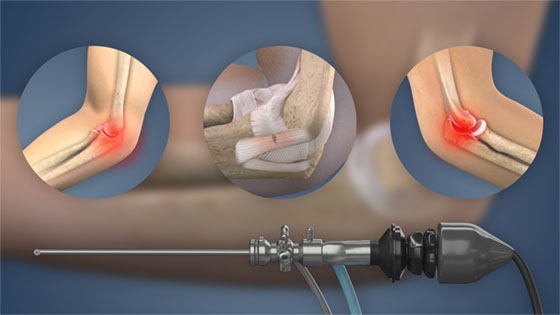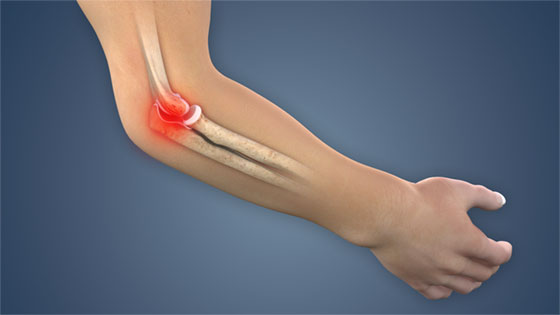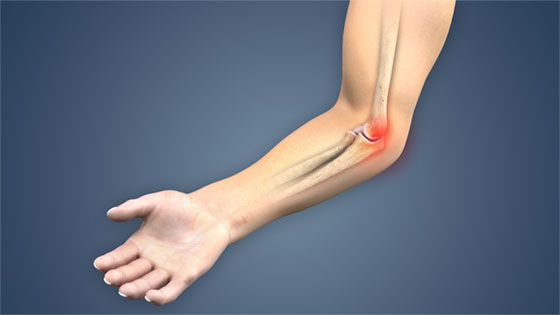What is Ulnar Collateral Ligament Reconstruction (Tommy John Surgery)?
Ulnar collateral ligament reconstruction (also known as UCL Reconstruction, UCLR or Tommy John Surgery) is a surgical procedure performed to replace a damaged UCL (ulnar collateral ligament) with graft material from elsewhere in the patient’s body.
Key statistics about Ulnar Collateral Ligament Reconstruction
- UCL reconstruction is performed most commonly in collegiate athletes[1]
- 83% of individuals who undergo UCL reconstruction return to their previous level of activity[2]
- 80-97% of Major League Baseball pitchers return to sport approximately 12 months following UCL reconstruction[3]
Expert Insights
Understanding Tommy John Surgery - Jason Klein, MD
Elbow Anatomy
The elbow joint is formed by three bones: the humerus, the ulna, and the radius.Ligaments connect bones to other bones and provide stability to the joint. The ulnar collateral ligament (also known as the UCL or medial collateral ligament) connects the humerus to the ulna, stabilizing the inside of the elbow joint.
Ligaments connect bones to other bones and provide stability to the joint. The ulnar collateral ligament (also known as the UCL or medial collateral ligament) connects the humerus to the ulna, stabilizing the inside of the elbow joint.

Why is UCL Reconstruction performed?
UCL reconstruction is often required following UCL damage in order to stabilize the elbow and allow a return to normal activity.
Damage to the UCL can occur through traumatic injury, but is often due to deterioration over time as a result of repetitive movements. UCL injury can cause pain, numbness, tingling, and elbow instability.
Who needs UCL Reconstruction?
UCL reconstruction is a commonly recommended surgical procedure for patients who have experienced UCL tears, detachments, or significant deterioration. UCL injury is common among individuals engaging in overhead throwing movements such as baseball pitchers, javelin throwers, and athletes who engage in volleyball and racquet sports.
UCL reconstruction is necessary to address UCL damage that cannot be repaired or treated with nonsurgical measures.
How is the UCL Graft prepared?
There are numerous graft material options available for UCLreconstruction, which are typically autografts (from the patient), but in some cases allografts (from a donor) may be used instead.
The palmaris longus tendon from the wrist and forearm is the tendon most frequently used in UCL reconstruction, but other tendons from the hamstring, big toe, or ankle may also be utilized. Small incisions are made to remove the tendon, and it is then cleaned and prepared for the reconstruction procedure.

How is UCL Reconstruction performed?
- The surgeon will make an incision on the inside of the elbow and access the UCL.
- The damaged portions of the UCL are removed and the bones are prepared for the graft.
- After the graft is harvested and prepared, bone tunnels are created in the ulna and humerus.
- The graft is pulled through the ulnar and humeral tunnels and secured. Surgical variations exist and the way the tendon is threaded through the bone and secured will differ depending upon surgeon preference.
- The reconstruction is tested for strength and stability.
- Finally, the incision is closed using sutures.
What are the risks of UCL Reconstruction?
Risks associated with UCL reconstruction may include:
- Infection
- Nerve or blood vessel damage
- Stretching or tearing of the graft
- Elbow stiffness
How long does it take to recover from UCL Reconstruction?
-
24 hours after surgery
Most patients are able to return home the same day as their procedure. A physical therapy routine will be established by the surgeon and physical therapist, and pain medication may be prescribed. Most patients are required to wear a brace or splint to immobilize the affected arm. -
2 weeks after surgery
Any non-dissolvable sutures are removed, and bruising and swelling begin to subside. -
4-6 weeks after surgery
Most patients can discontinue using the brace while continuing physical therapy. -
2-4 months after surgery
Most patients regain normal range of motion. -
9-12 months after surgery
Most patients are fully recovered from UCL reconstruction.
What are the results of UCL Reconstruction?
UCL reconstruction is a safe and effective procedure performed to restore elbow function to patients with UCL damage and elbow instability. Patients who undergo UCL reconstruction have a high rate of return to sport and a low rate of complications.
Find an Orthopedic Doctor in Your Area





